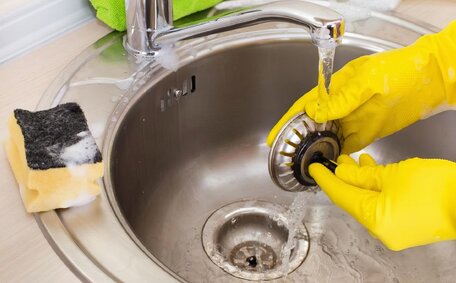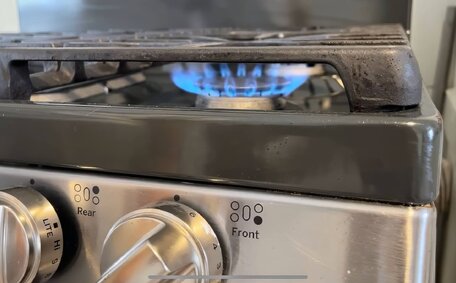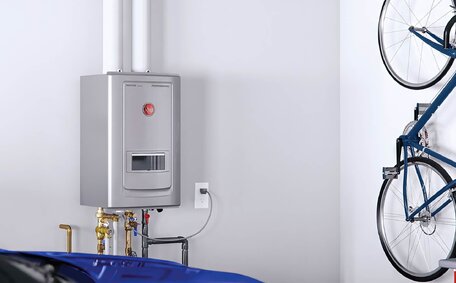What is Trenchless Pipe Relining?
Trenchless pipe relining is a modern, innovative solution for repairing damaged underground pipes without the need for extensive excavation. This trenchless technique is revolutionising the plumbing industry, especially in areas like Pennant Hills, Sydney, by providing a minimally invasive way to rehabilitate ageing or deteriorating pipes.
The basic concept behind trenchless relining is to insert a new pipe lining inside the damaged host pipe. This negates the need to dig up yards, driveways or floors to replace pipes. There are a few different trenchless relining methods, including Cured-in-place pipe (CIPP) lining, Fold and form pipelining, Pipe bursting, and Pipe relining.
What sets trenchless relining apart from traditional open-trench pipe replacement is that it requires little to no excavation. Only small access pits are dug at either end of the pipe being repaired. This means significantly less disruption to landscapes, structures and infrastructure compared to digging trenches for installing new pipes.
During relining, durable epoxy resin linings are inserted into damaged pipes via the access pits. The process can extend the lifespan of ageing pipes by 50 years or more.
These linings then harden to form a smooth, jointless 'pipe within a pipe’ - restoring structural stability and eliminating leaks and blockages without having to replace the entire pipe.
For residents and businesses around Pennant Hills, trenchless relining provides a fast, efficient and cost-effective solution for a variety of common plumbing problems. Relining prevents the need to excavate floors, demolish tiled areas, or damage your established gardens and lawns.
With its minimal invasiveness, use of advanced epoxy materials, and a method which dramatically extends pipe lifespan, trenchless pipe relining is a groundbreaking innovation in underground pipe repair.
Overview of the Trenchless Relining Process
The trenchless relining process is a multi-step procedure that utilises advanced technologies and materials to rehabilitate damaged pipes.
It begins with a thorough inspection of the pipe using CCTV cameras. The camera is fed through the pipe to identify any defects, damage or blockages. This allows plumbers to assess the condition and exact length of the pipe needing repair.
Once the inspection is complete, measurements are taken and a custom-fit epoxy or PVC liner is fabricated. These durable polymeric materials can withstand decades of use.
On the day of the relining, the liner is saturated with a thermosetting resin. It is then inserted into the damaged pipe through an access point and expanded using air pressure. The liner bonds tightly to the old pipe walls as the resin cures.
Lateral connections are reinstated if severed in the process. Once fully set, the epoxy or PVC liner provides a jointless, seamless and corrosion-resistant new pipe within the old pipe.
No trenches need to be dug, making it far less invasive than removing and replacing pipes. The pipe remains fully operational throughout the 2-3 hour relining process.
This method originated in 1971 England as an alternative to traditional open-trench pipe replacement. Cured-in-place pipe (CIPP) relining has proven effective for over 50 years across millions of pipe repairs worldwide.
With its efficiency, durability, and minimal disruption, drain pipe relining is often the smartest option for upgrading drainage, sewer and pipe systems.
Inspection and Cleaning of the Pipe
Before a trenchless pipe relining can begin, the existing pipe must be thoroughly inspected and cleaned. This preparatory phase is crucial for ensuring a successful installation of the new pipe liner.
Plumbers will use CCTV cameras on robotic crawlers to conduct a detailed video inspection of the interior. High-resolution cameras can identify any obstructions, damage, root ingress or other defects.
The inspection maps out the exact length and condition of the pipe. This allows any necessary repairs to be identified before the relining proceeds.
After CCTV inspection, powerful high-pressure water jets are used to clean the interior walls. Built-up debris, scale, corrosion and old pipe materials need clearing to provide the new liner with a clean surface to adhere to.
High-velocity hot water jets scour the pipe walls right down to the bare substrate. Industrial strength water pressures of up to 5000 PSI are often needed for proper cleaning.
Vacuum extraction removes all the debris and waste material flushed out by jetting. The pipe must be left fully clear and clean before inserting the epoxy or PVC liner.
A final CCTV inspection verifies that no obstruction remains. Only then can the trenchless relining phase begin, now that the pipe is pristine and prepared to accept its new internal liner.
Inserting and Curing the New Pipe Liner
Once the existing pipe is cleaned and inspected, the next phase is inserting the new liner and curing it in place.
The liner material is saturated with a thermosetting epoxy resin before insertion. This resin is usually a vinyl ester, polyester or epoxy blend. It provides a protective coating and seals the liner.
The liner is then fed through an access point and guided into the damaged pipe using rope and pulley systems. Air pressure gently inflates the liner until it presses tight against the old pipe walls.
As the epoxy resin cures, it bonds firmly to the host pipe, sealing cracks and holes. Special UV lights accelerate and enhance the curing process, hardening the resin into a tough, seamless barrier.
The epoxy-saturated liner essentially forms a new pipe within the old one. It adds structural integrity, prevents leaks and restores function. The liner can withstand decades of use.
Lateral connections to houses can be easily reinstated from inside the repaired pipe if needed, without excavation.
Curing the liner in place allows for minimal disruption to landscapes and structures. Within 2-3 hours the pipe is restored from the inside out with this innovative trenchless relining method.
This resin is usually a vinyl es.
Benefits of Trenchless Pipe Relining
Trenchless pipe relining offers numerous benefits compared to scaping remain untouched.
Cost savings - Relining is 60-80% cheaper than full pipe replacement.Speed - Pipe restored in just 2-3 hours rather than days.Extended lifespan - Epoxy liners last 50+ years.Improved flow - Smooth liner prevents blockages and buildup.There are also environmental benefits more significant than traditional methods:
- No excavation waste goes to landfill.
- Low energy consumption compared to manufacturing and installing new pipes.
- Conserves resources by reusing existing pipes.
- Prevents soil and groundwater contamination from pipe leaks.
With advantages like longevity, cost savings, efficiency and eco-friendliness, trenchless relining is often the smartest pipe renovation method.
Cost Savings vs Traditional Methods
One of the biggest advantages of trenchless pipe relining is the substantial cost savings compared to traditional open-trench pipe replacement methods.
On average, relining a pipe costs 60-80% less than completely removing and replacing it. There are several reasons for these major savings:
- No excavation equipment or labour required
- Minimal disruption to surrounding utilities, structures and landscapes
- Short project timeframe - pipe operational again within hours rather than days
- Eliminates material expenses for new piping
For a typical residential client in the Pennant Hills area needing 50 metres of pipe relining, costs can be as low as $5,000-7,000. Comparatively, replacing those 50 metres via open trenching would cost $15,000-20,000+.
These savings apply to various pipe types and sizes. Sewer, drain, water and gas pipes can all be renovated for a fraction of replacement costs using trenchless methods.
With its cost-effectiveness, minimally invasive approach and proven long-term results, trenchless relining offers substantial savings for clients needing underground pipe repairs and upgrades.
One of the biggest advantages of trenchless pipe relining is the substantial cost savings compared to traditional open-trench pipe replacement methods.
\ - No excavation equipment or labour required
\ - Minimal disruption to surrounding utilities, structures and landscapes
\ - Short project timeframe - pipe operational again within hours rat selling points of trenchless pipe relining is the minimal disruption caused to landscapes, structures and properties. This can provide significant advantageshless relining requires no major excavation or demolition. Access is gained through small entry pits dug at either end of the pipe. The rest of the pipe remains buried and undisturbed underneath driveways, gardens and floors.
For clients, this means no loss of front or backyard landscaping. Driveways remain intact, eliminating expensive repaving. Internal flooring and structures are also left undamaged.
There is no need to dig up tiled areas, demolish garden beds or remove trees and shrubs.
With no disruptive trenching required, properties can remain safely occupied during the short relining process. Costly asbestos removal is avoided. Normal business operations can continue undisrupted for commercial clients.
By rehabilitating pipes from the inside-out, trenchless relining prevents the major inconvenience, property damage and repair costs caused by traditional open-trench methods. This makes it an ideal pipe renovation solution for properties across Pennant Hills.
Extended Pipe Lifespan and Durability
One of the biggest advantages of trenchless pipe relining is the extended lifespan and enhanced durability it provides to ageing or damaged pipes. Epoxy resin liners used in the relining process can add decades to a pipe’s useful service life.
The seamless epoxy barrier coats and reinforces the inside of pipes with a corrosion, abrasion and chemical resistant material. This restores structural integrity to cracked, corroded or failing pipes. Tests show epoxy liners have a design life of over 50 years even in harsh sewer conditions.
Other trenchless lining materials like PVC and polyethylene are also highly durable polymers. They prevent pipe leaks, blockages and failures for the long-term after relining.
By rehabilitating pipes from the inside-out rather than replacing them, trenchless relining enables pipes that still have remaining functional years left to remain in place. The method avoids wasting the resources used to manufacture the original pipes.
With its superior durability and longevity, trenchless relining is often the most sustainable and effective way to extend the lifespan of underground pipes by decades.
Environmental Advantages
One of the most significant advantages of trenchless pipe relining is its eco-friendly nature compared to traditional replacement methods. With minimal excavation required, trenchless relining has several key environmental benefits:
- Greatly reduced carbon emissions and energy use from heavy machinery and trucking.
- No excavated waste produced, eliminating tonnes of material going to landfill.
- Minimal disruption and damage to existing landscapes and vegetation.
- Conserves resources and energy used to manufacture new piping.
- Prevents soil and groundwater contamination from pipe leaks.
For the ecologically-conscious residents of Pennant Hills and surrounding areas, trenchless relining enables critical pipe repairs while protecting the environment. The ability to extend pipe lifespan while avoiding excavation waste makes it the greener choice over traditional replacement methods.
With trenchless relining, customers can be confident they are choosing the most sustainable and eco-friendly option for underground pipe renovations. This matches the environmentally aware ethos of households throughout the Pennant Hills region.
One of the most significant advantages of trenchless pipe relining is its eco-friendly nature compared to traditional replacement methods.
\\\ - Greatly reduced carbon emissions and energy use from heavy machinery and trucking.
\\\ - No excavated waste produced, eliminating tonnes of material going to landfill.
\\\ - Minimal disruption and damage to existing landscapes and vegetation.
\\\ - Conserves resources and energy used to manufacture new piping.
\\\ - Prevents soil and groundwater contamination from pipe leaks.
\\\
Limitations of Trenchless Pipe Relining
While trenchless pipe relining offers many benefits, there are some limitations andturally sound enough to support liner insertion. Fully collapsed or disintegrated pipes need replacing.
- Not effective for pipes with extreme damage, large cracks or missing sections. The liner needs a continuous interior surface to adhere to.
- Compatibility with certain pipe types like clay, cast iron or asbestos cement. Plastic and concrete pipes usually suitable.
- Limited to straightforward pipe alignments. Severe bends or blockages prevent liner insertion.
- Identifying and reinstating lateral connections from main pipe can be difficult.
- Liner can reduce internal pipe diameter slightly depending on original size.
A full condition inspection by qualified plumbers determines if trenchless relining is appropriate. While limitations exist, trenchless drain repair remains the optimal solution for most pipe repairs if feasible.
While trenchless pipe relining offers many benefits, there are some limitations and considerations to bear in mind when determining if it is the right solution:
Only suitable for pipes 4 inches or larger in diameter. Smaller pipes may not accommodate lining equipment.Existing pipe must be structurally sound enough to support liner insertion. Fully collapsed or disintegrated pipes need replacing.Not effective for pipes with extreme damage, large cracks or missing sections. The liner needs a continuous interior surface to adhere to.Compatibility with certain pipe types like clay, cast iron or asbestos cement. Plastic and concrete pipes usually suitable.Limited to straightforward pipe alignments. Severe bends or blockages prevent liner insertion.FAQs About Trenchless Pipe Relining
Here are answers to some frequently asked questions about the trenchless pipe relining process:
What types of pipes can be relined?
Trenchless relining can be used on many ger.
How long does the relining process take?
Most relining jobs take only 2-3 hours to complete once the liner has been prepared. This means minimal disruption to your property. The pipe can be back in service the same day.
How do you reline a pipe?
The relining process involves cleaning the damaged pipe, then inserting an epoxy-saturated liner that inflates and bonds to the old pipe walls. The epoxy cures to form a smooth new pipe within the old pipe.
How long do relined pipes last?
Epoxy liners used in trenchless relining have a design life of over 50 years. They are extremely durable and resistant to corrosion, abrasion and chemicals.
Can relining restore water flow?
Yes, relining eliminates any internal obstructions, buildup, root ingress and leaks that may be blocking water flow. It restores smooth pipe interiors and optimal flow rates.
Is the process messy or disruptive?
Trenchless relining is a clean, minimally invasive process. It requires only small access pits dug at either end of the pipe being repaired. Your property is left undamaged.
How much does trenchless relining cost?
On average, relining costs around 60-80% less than full pipe replacement. Exact costs depend on the length and diameter of pipes needing repair.






